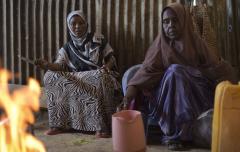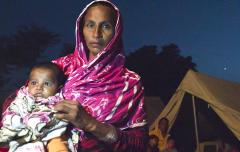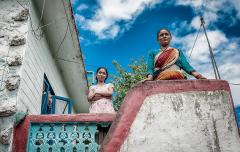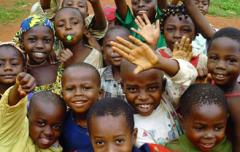Efforts growing to provide displaced populations with renewable energy
As the number of refugees and displaced people grows around the world, the lack of electricity and clean cooking fuels at refugee camps and displaced people’s ability to access the same is sparking increased concern among host countries, humanitarian agencies and development organizations.
The number of forcibly displaced people has doubled globally in the past two decades, reaching a new high of 65.6 million in 2017. Roughly a third of those people live in refugee camps, which have little or no electricity or clean cooking fuels and to the extent that there is energy, it is mostly from diesel generators. In some cases, cooking is done with locally-collected firewood and charcoal, posing health risks for the family and safety risks for women leaving camps in search of fuel.
The energy needs of refugees and displaced people also can be a source of conflict with host communities. In Tanzania, host to more than 350,000 refugees and displaced people, access to wood fuel has been a flash point with local communities, as identified in a 2017 case study by UNEP DTU.
With more and more people becoming forcibly displaced and a growing appreciation of how long people remain displaced, there is a growing focus on providing clean energy services. Last year, for example, the UN Refugee Agency (UNHCR), switched on a solar plant that is providing power for a refugee camp in Jordan. The 2-megawatt project was funded by the IKEA Foundation’s Brighter Lives for Refugees campaign. Mastercard and Western Union also announced a collaboration last year to explore the use of digital technologies to help refugees access basic human goods and finances within refugee camps.
Speeding and scaling these clean energy efforts globally was the focus of a two-day conference last month in Berlin, hosted by the German government, UNHCR, Moving Energy Initiative, Practical Action, United Nations Foundation, Global Alliance for Clean Cookstoves and other international partners. It attracted more than 100 participants from governments, humanitarian agencies, development organizations and private enterprises in the off-grid electricity and clean cooking sectors.
“Everyone should have access to reliable, affordable, clean energy and that includes those who find themselves displaced,” said Rachel Kyte, CEO and Special Representative of the UN Secretary-General for Sustainable Energy for All, in a video that kicked off the conference, Energy for Displaced People: Sustainable Energy Solutions for Situations of Displacement.
“The good news is that the business models, the technology and new ways of mobilizing finance makes it possible to reach these people,” Kyte added.
Executives at the United Nations Refugee Agency also see opportunities, but emphasized that refugees’ needs be met along with those of their hosts.
“UNHCR …does not believe it is effective to address refugees’ energy needs alone. Strong partnerships are necessary to improve access to clean energy for forcibly displaced people and their hosts,” said Craig Sanders, UNHCR’s Deputy Director, Division of Programme Support and Management.
Attendees started to develop key elements of a global action plan that will be drafted in the next six months. The action plan aims to raise ambition for greater access to clean energy in both. The action plan will address host country engagement, capacity building, technical expertise and innovative finance.
“Many refugee camps operate for decades, providing opportunities to adopt more holistic and affordable energy solutions that can improve both the quality of life of displaced people and host populations and the effectiveness of camp operations,” said Jem Porcaro, senior director for energy access at the United Nations Foundation.
Look for more details on this exciting effort at the 2018 Sustainable Energy for All Annual Forum May 2-3 in Lisbon, Portugal.
Photo credit: UNHCR / Warrick Page




